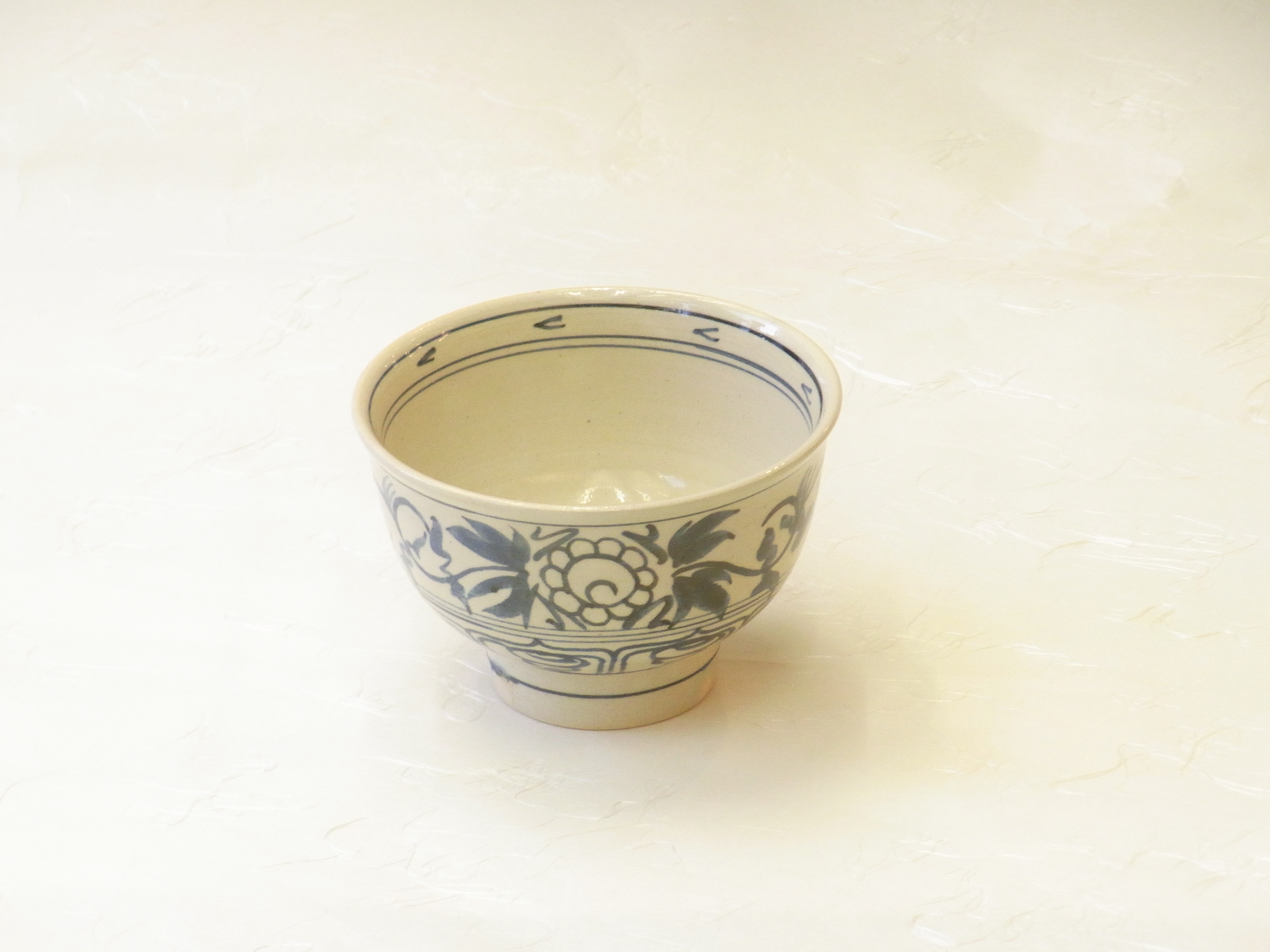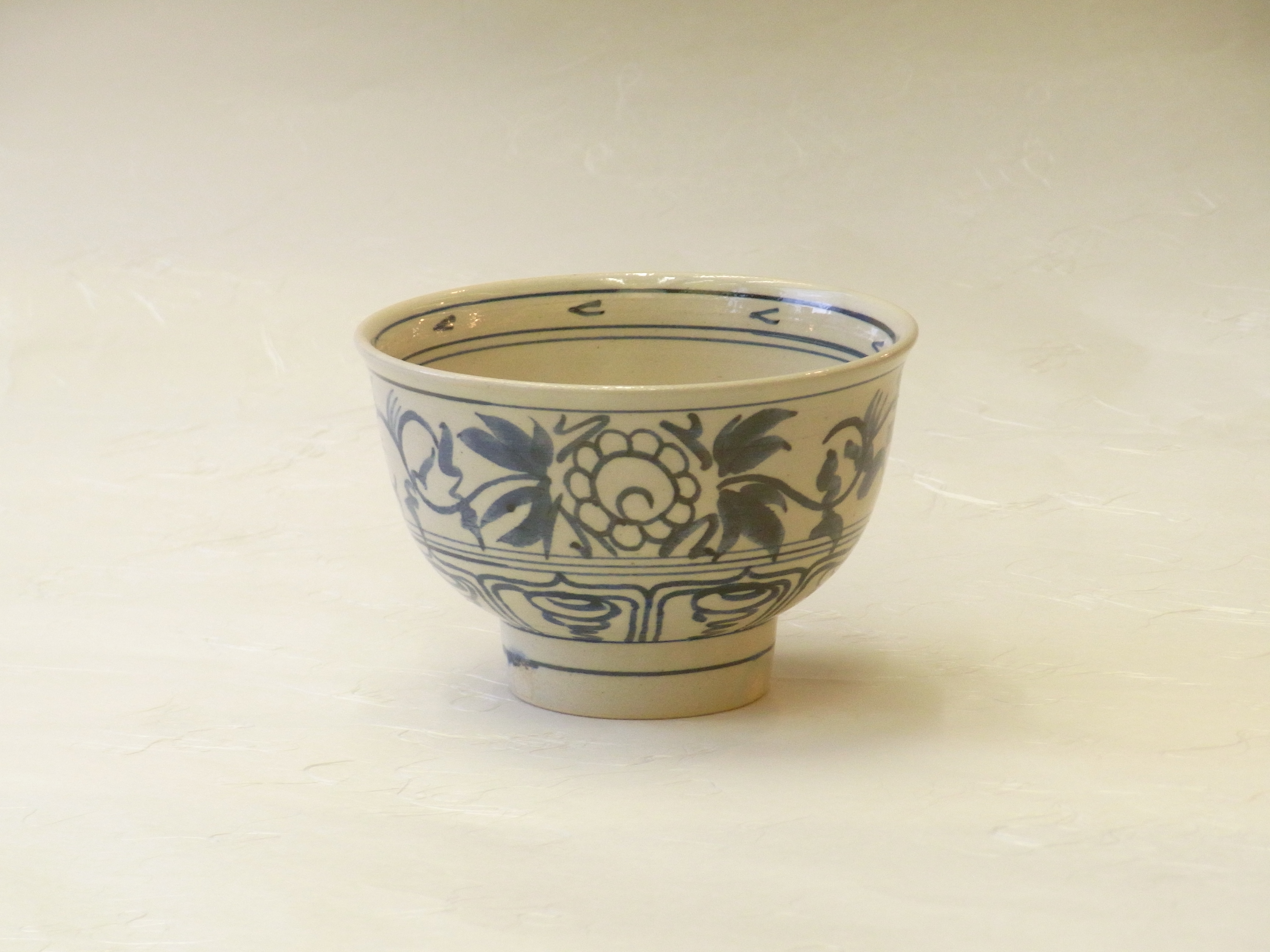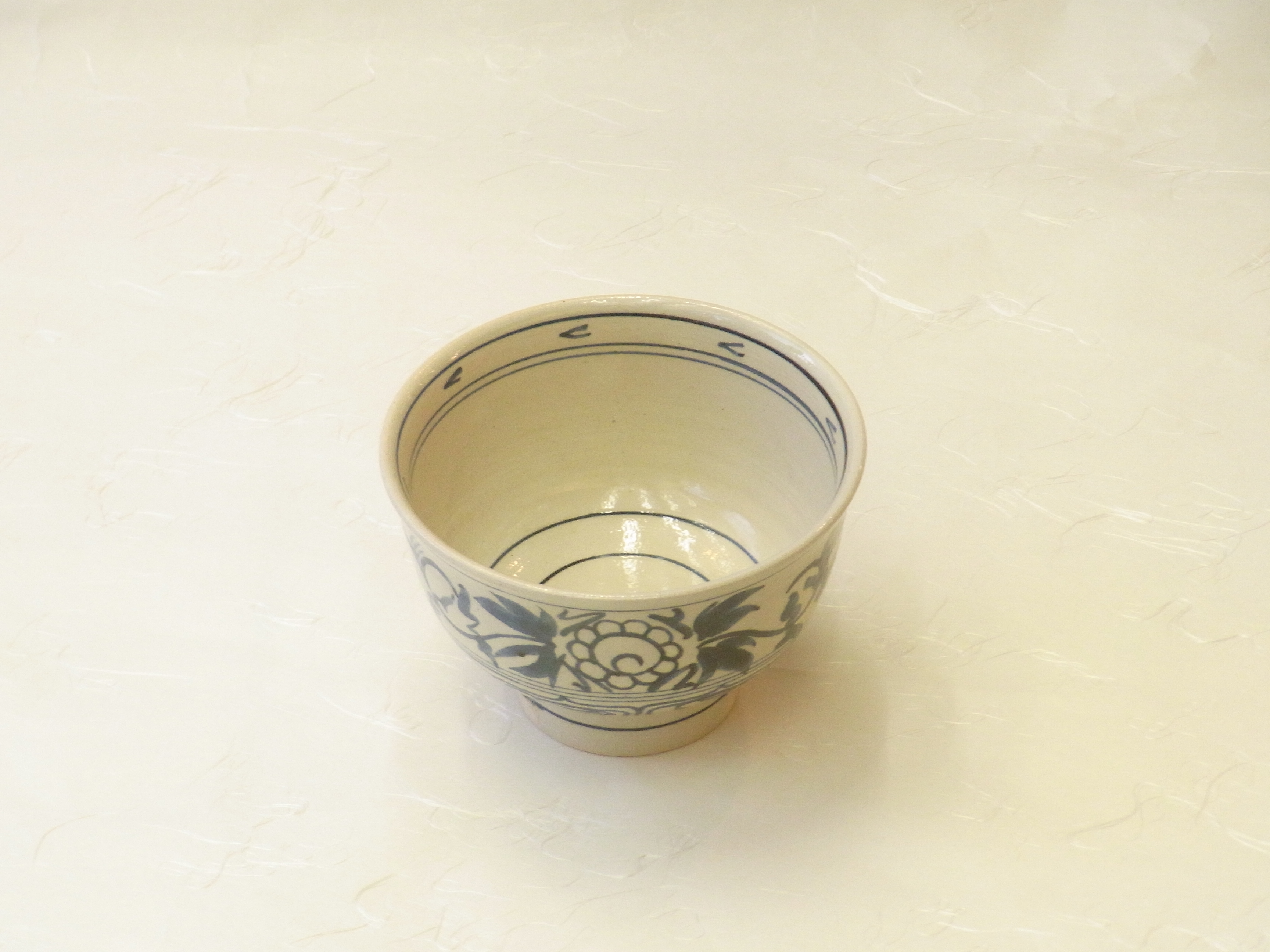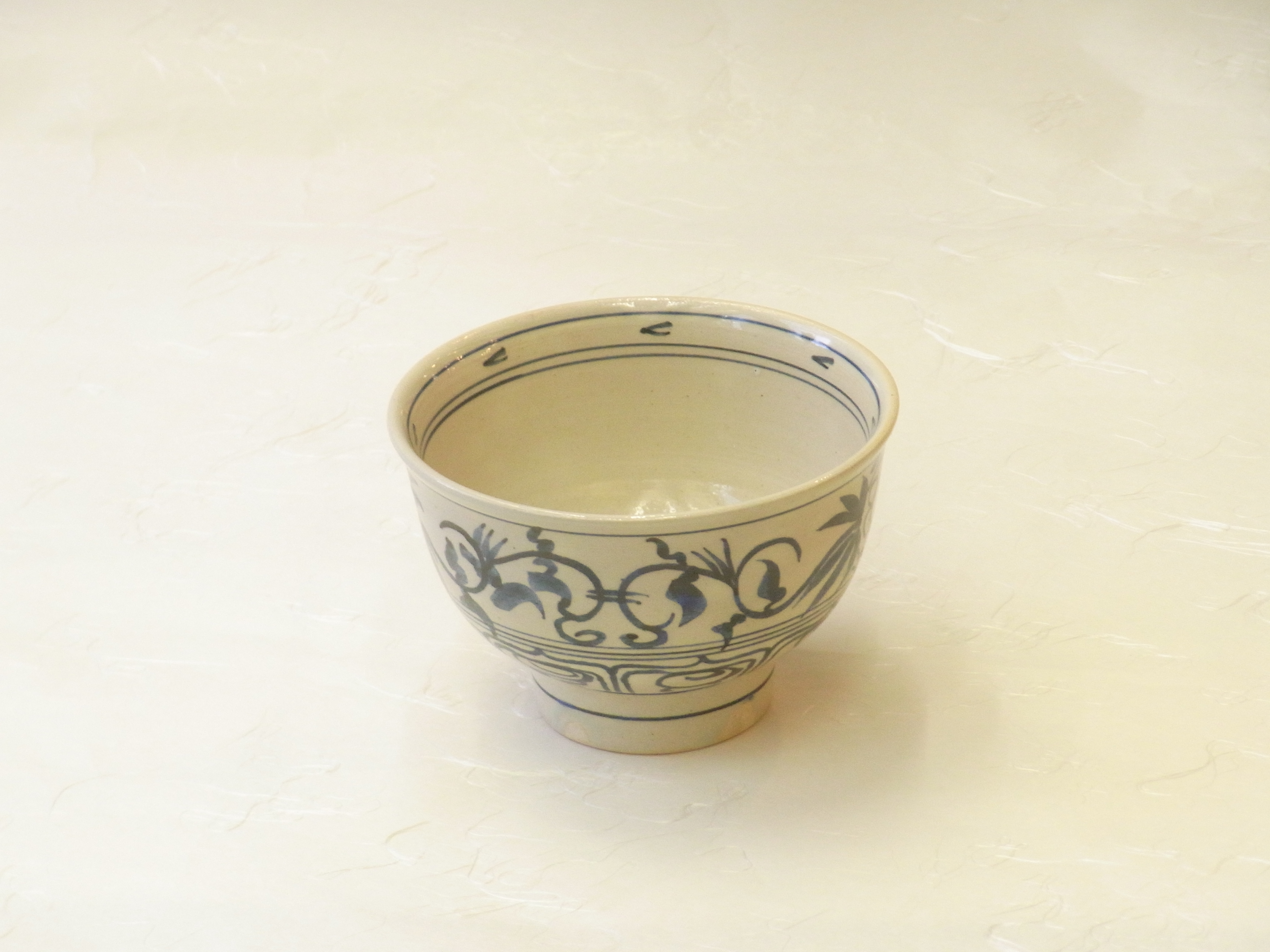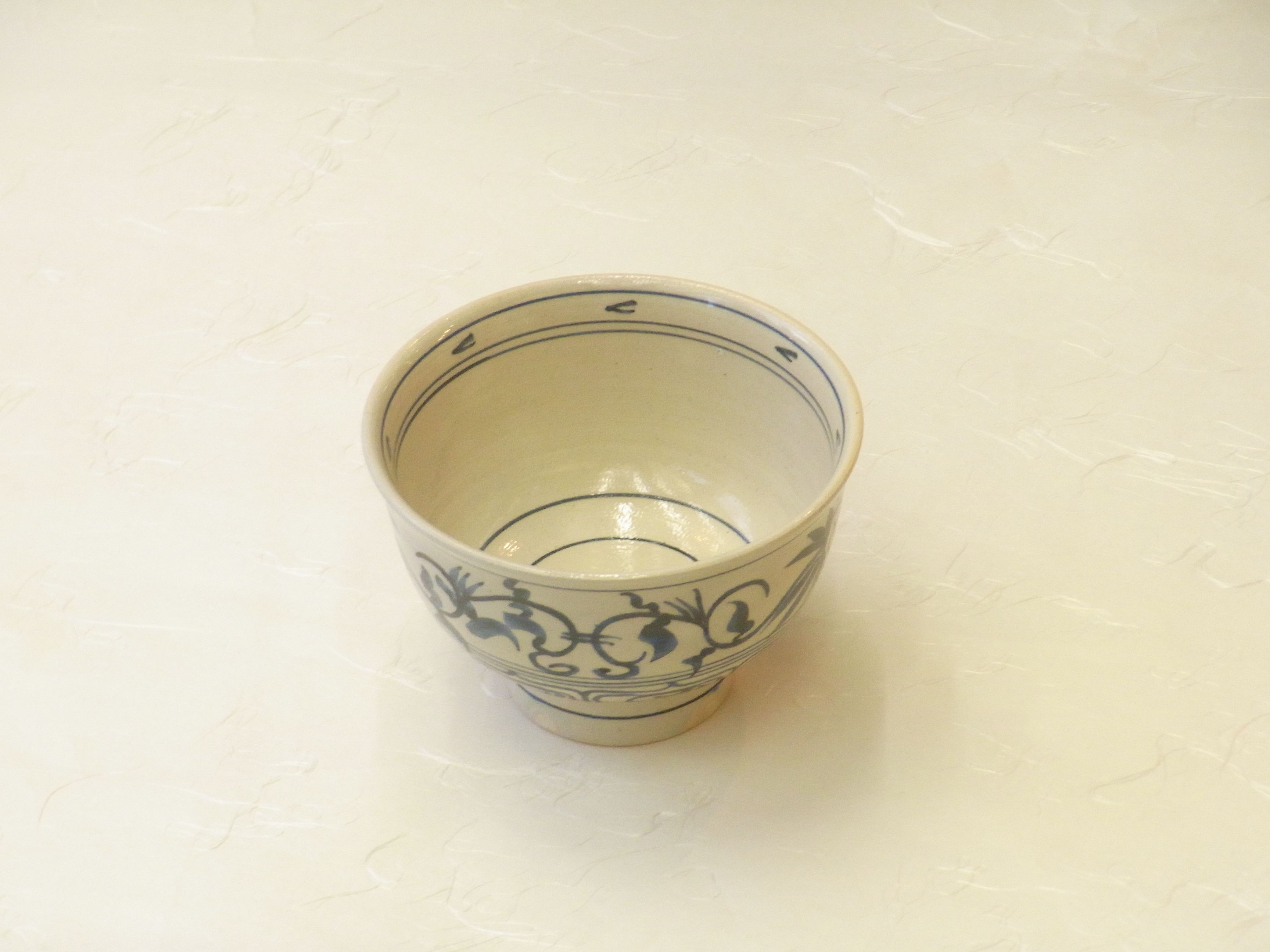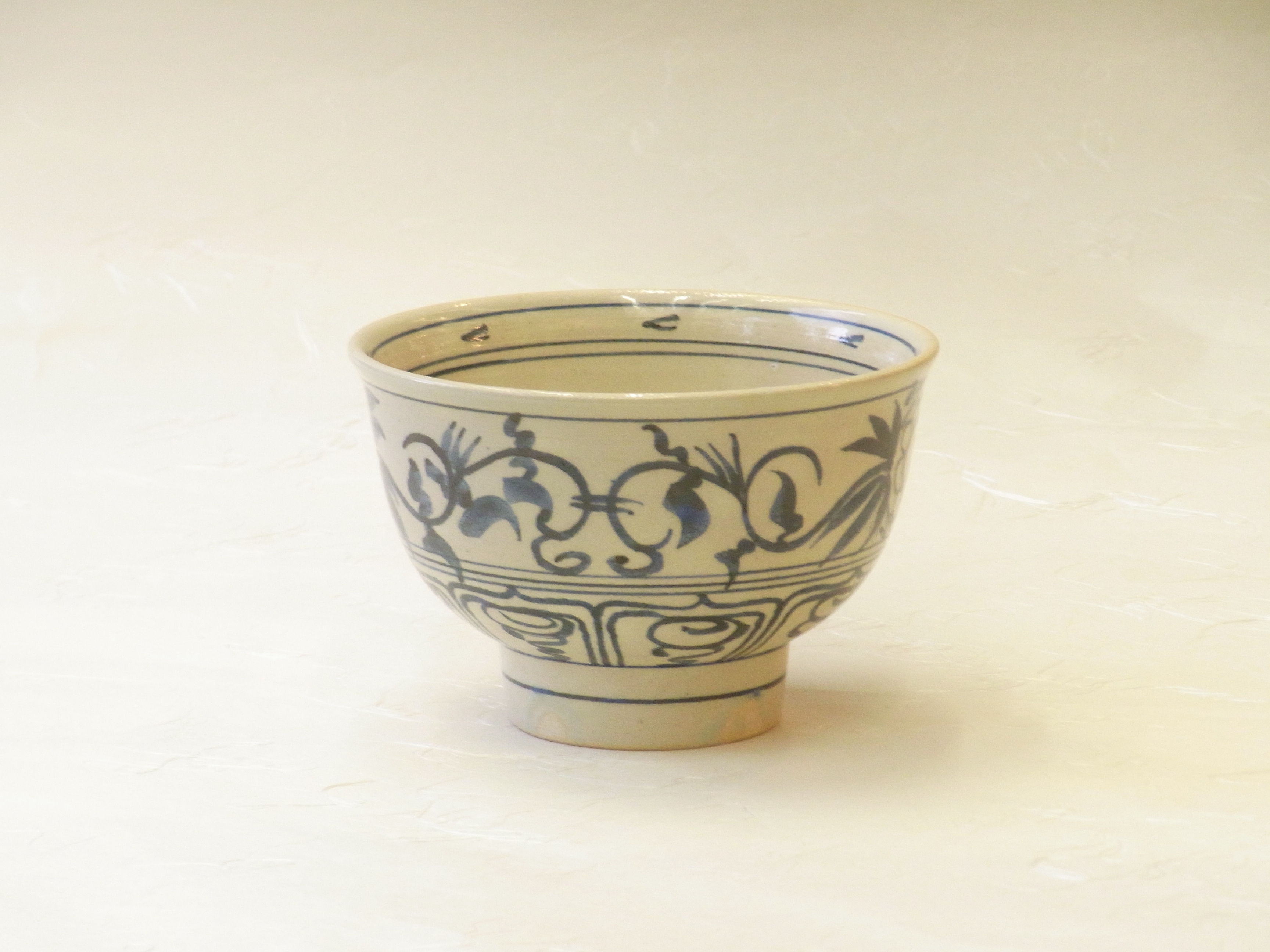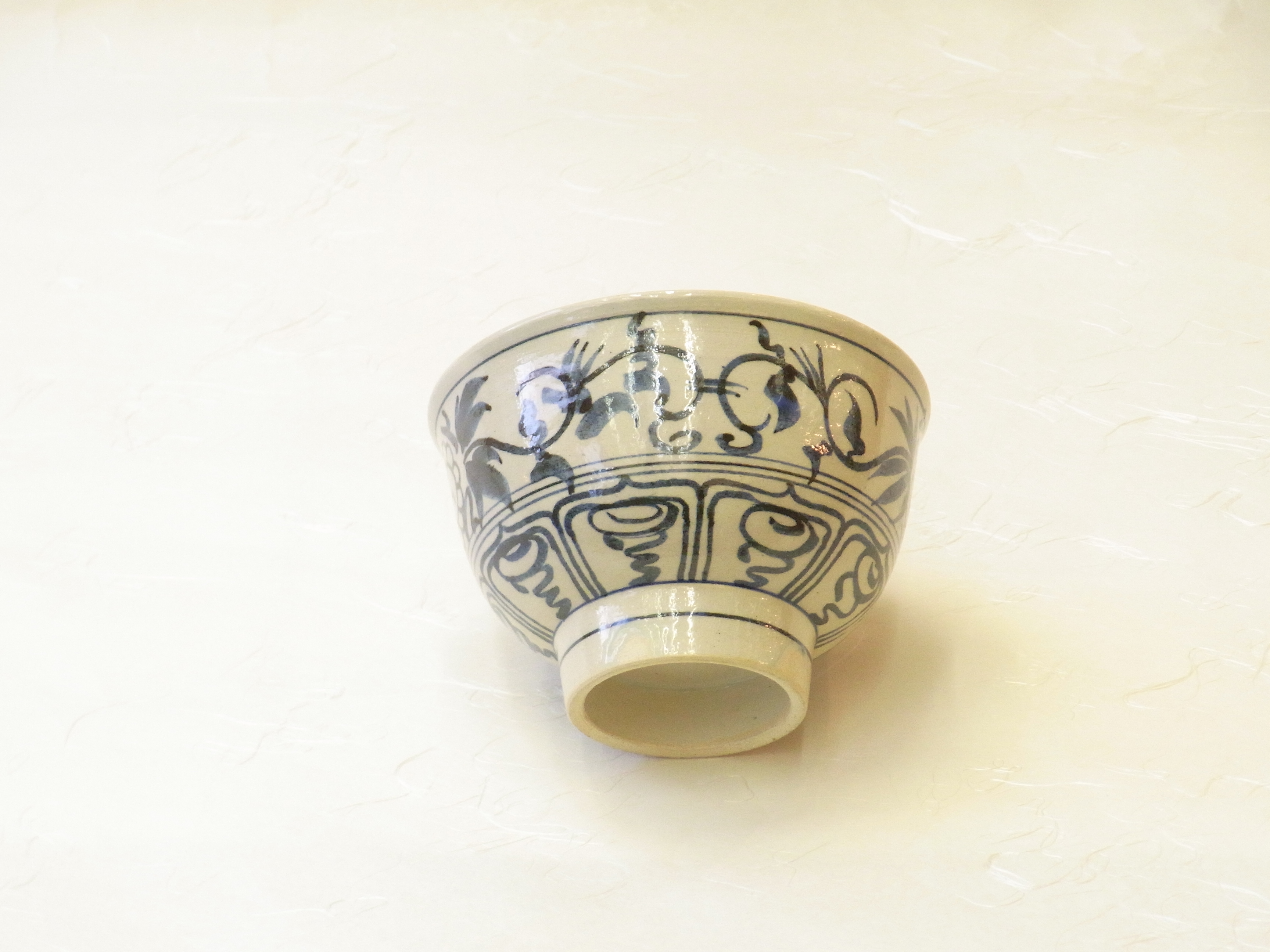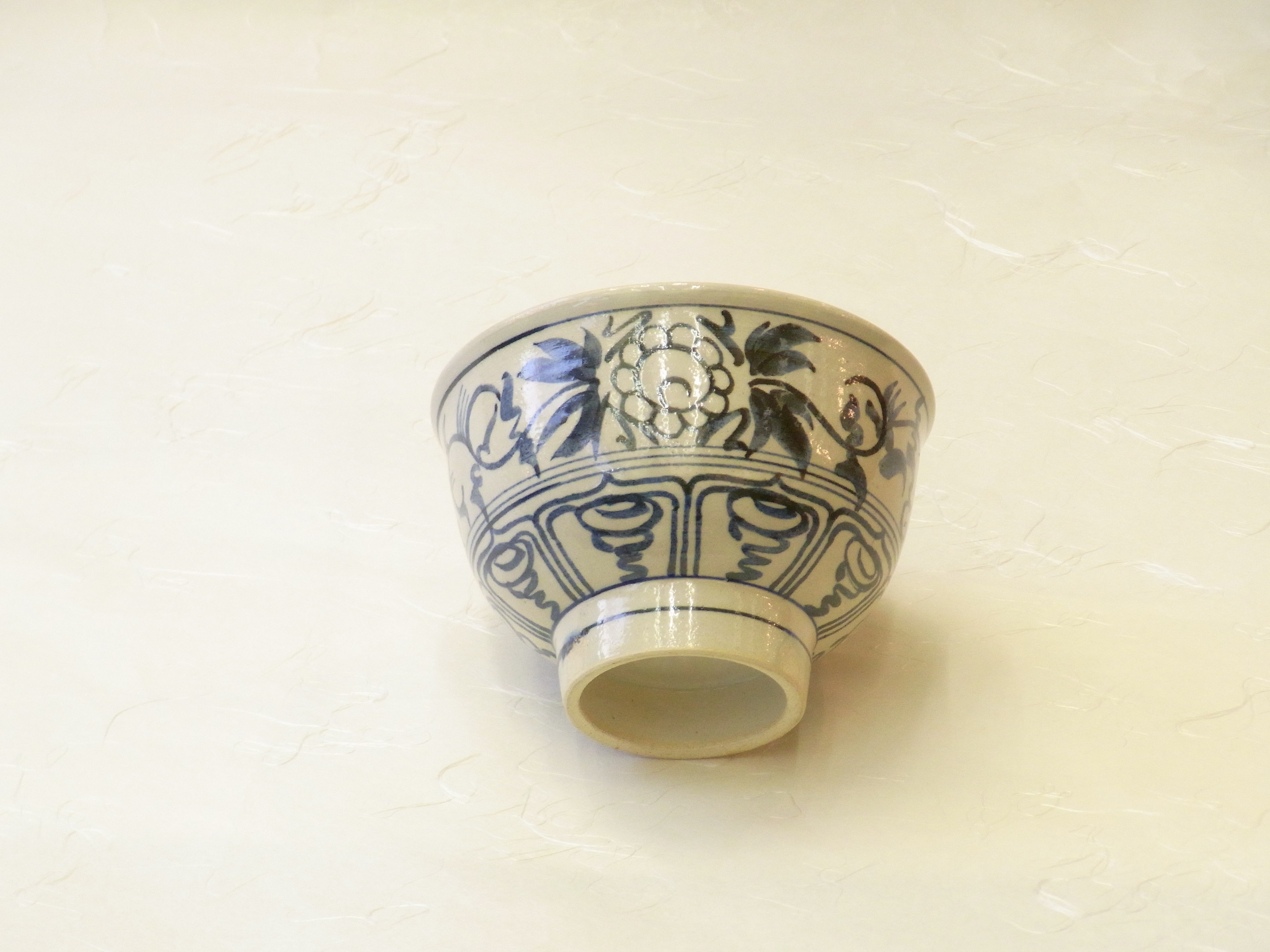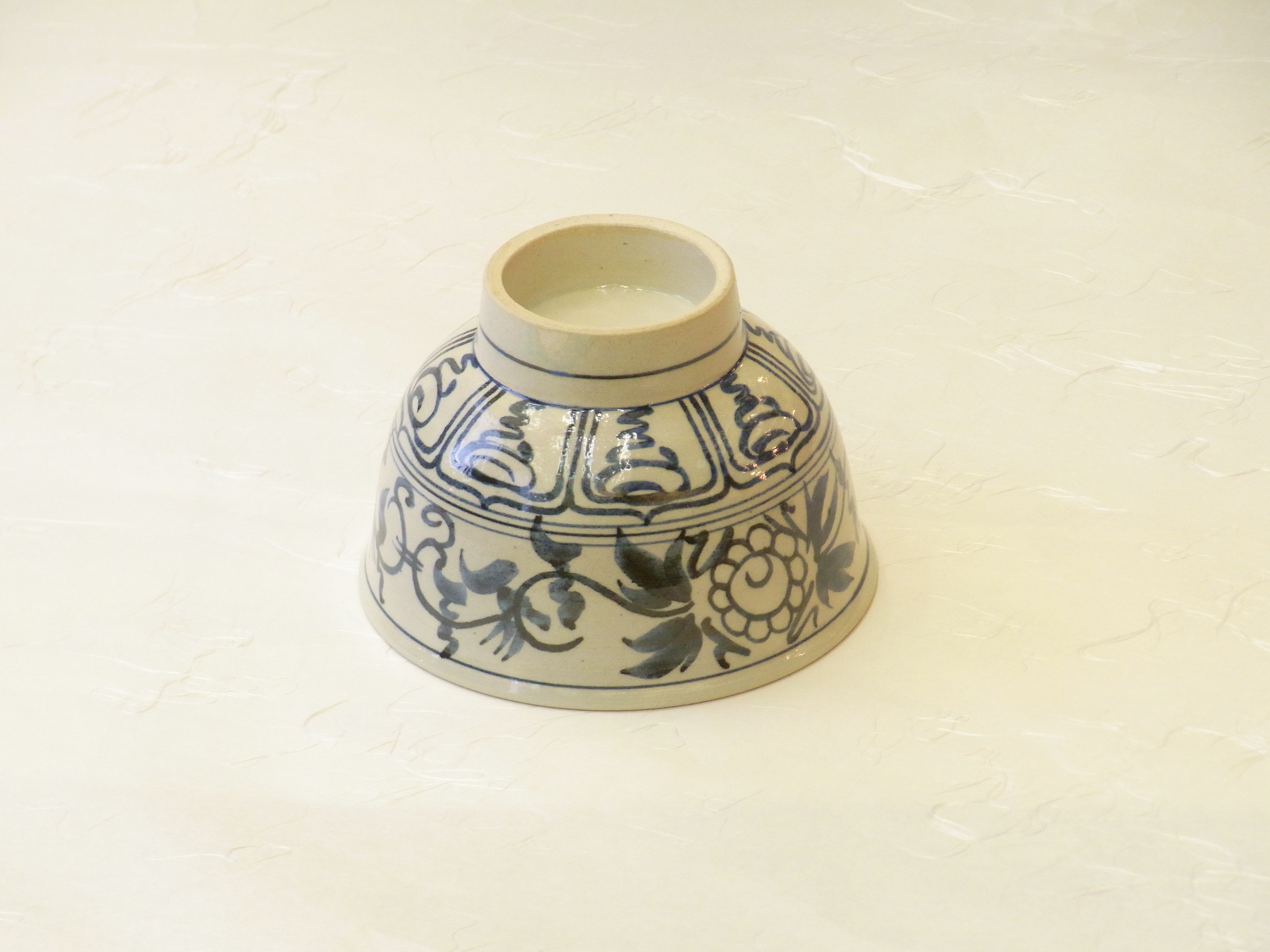この抹茶碗は安南の抹茶碗を写して、万古焼の黒石窯で作られたものです。
安南とは元々、ベトナムで作られた陶磁器のことで
ベトナムでは、中国の陶磁器の影響を受け、早くから白磁や青磁が
焼かれていました。
14、15世紀からは染付や赤絵の製作も始まりました。
日本とベトナムの間には室町時代末から江戸時代に掛けて
かなりの交易があり、多くのベトナム製陶磁器がもたらされました。
その中の安南を写して作られています。
染付は釉薬の下のコバルト顔料がにじんだ様子から、絞り手と呼ばれ
茶人に大変喜ばれました。
外側全面に絵付けがされており、とてもよく描かれています。
内側と高台にはラインが入れられており、これも安南茶碗の特徴です。
高台は高めで作り手が釉薬に付ける時に持った指の跡が意図的に
残されており、染付もにじんでおり、手作り感があります。
径 12㎝ 高さ 7.5㎝
This matcha bowl is made from an old-glazed kuroishi kiln, copying an Annan matcha bowl.
Annan was originally made in Vietnam.
In Vietnam, under the influence of Chinese ceramics, white porcelain and celadon
It was baked.
In the 14th and 15th centuries, we began making dyeing and red paintings.
Between Japan and Vietnam, from the end of the Muromachi period to the Edo period
There was a considerable trade, and a lot of Vietnamese ceramics were brought.
It is made by copying Annan in it.
Dyeing is called the aperture er because the cobalt pigment under the glaze is tinged.
The tea ceremony was very pleased.
The outer surface is painted and painted very well.
The line is put in the inside and the hill, and this is also a feature of Annan tea bowl.
The height is high, and the trace of the finger that the creator attached to the glaze is intentionally
It is left behind, and the dyeing is also tingling, and there is a handmade feeling.
這個抹茶碗是用一塊由一塊古烤的黑石窯製成的,上面印有安南的抹茶碗。
安南最初是越南製造的陶瓷。
在越南,受中國陶瓷的影響,白瓷和青瓷
被燒焦了
從14世紀和15世紀開始,染色和紅畫的製作也開始了。
日本和越南之間的江戶時代從穆羅馬奇時代末期開始
有大量的貿易,許多越南陶瓷被帶來。
它是由安南的複製品製作的。
染色被稱為擠壓手,因為釉下的鈷顏料被滲出。
茶人很高興。
整個外表面都畫得很好。
內部和高地都有線條,這也是安南茶杯的特點。
高臺是高的,當造者附加到釉料時,手指的痕跡是故意的。
留在,染色也浸泡,有手工製作的感覺。
这个抹茶碗是用一块由一块古烤的黑石窑制成的,上面印有安南的抹茶碗。
安南最初是越南制造的陶瓷。
在越南,受中国陶瓷的影响,白瓷和青瓷
被烧焦了
从14世纪和15世纪开始,染色和红画的制作也开始了。
日本和越南之间的江户时代从穆罗马奇时代末期开始
有大量的贸易,许多越南陶瓷被带来。
它是由安南的复制品制作的。
染色被称为挤压手,因为釉下的钴颜料被渗出。
茶人很高兴。
整个外表面都画得很好。
内部和高地都有线条,这也是安南茶杯的特点。
高台是高的,当造者附加到釉料时,手指的痕迹是故意的。
留在,染色也浸泡,有手工制作的感觉。
